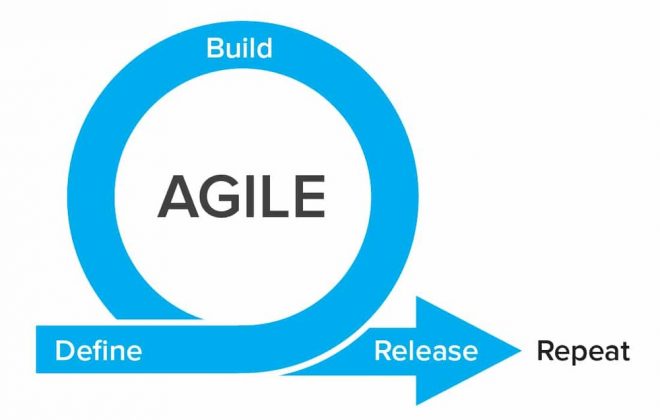How Orgzit helped Sunkeepers streamline Business Processes
Change is something that can’t be forced. It has to be realized first, and then acted upon.
IT sectors around the world are dynamically expanding everyday to the limit that the thin line separating them from each other is disappearing fast, bringing them together and creating a singular giant IT pool. The X-Gen is partly blaming the millennials for making everything so small and unique. Whereas the millennials are not happy with the staunch stance taken by X-Gen in retaining their traditional practices and working the old-school way. But if you talk about how one manages his business processes, neither the X-Gen nor the millennials have anything to argue about. For today, both realize one essential thing – everything and anything can be customized.
Today, all small and medium B2B organizations have started recognizing that they need to provide customers with a solution that scales with them. Otherwise, they are as good as the seasons that come and go. Take Sonya’s example –
1990 – The Sunkeepers
Sonya inherited a farm which grew wheat in abundance. She had a few neighbors who grew rice & soyabean and wanted her to collaborate with them to start a trade business together. But she wanted to pursue her studies in agriculture management and start a consultancy firm. Ambition took over Sonya’s better side and she started working part-time with her neighbours while saving for future. Within two years, she bought a small office in the countryside and started Sunkeepers Consultancy Pvt. Ltd. In addition to 10 farmers, she had a team of another 7 people handling agricultural supplies and sales. Let’s check out her key areas of in-house team management functions:
1. A sunkeeper used to maintain a register which inventorised the agricultural equipment to track individual equipment usage and sales status. There was a second register maintained for client database (which included name, location, and other relevant information)
2. Sunkeepers working in the finance division maintained a third register to keep track of their assets – equipment sales and purchase.
3. Only 3 people worked for the sales department, so the contracts drawn with the clients were assumed to be a joint effort – no salesperson got individual incentive.
Related : How can you optimize sales with a CRM
To wrap it up, majority of Sunkeeper’s sales data was stored & tucked away in piles of registers which never saw the day of light once they were closed. Since they were novice business people, they were yet to learn the best way to optimise their existing in-house resources.
2000 – The IT Revolution
In the next 10 years, the IT revolution created a wave of job opportunities and Sunkeepers started digitizing their offline documents and started keying-in data into excel sheets instead of filling registers. Sonya’s company grew from 7 to 50. They moved to a new office in town, got dedicated employee workstations and everyone started using cellular phones. (Yes! It was the new hot trend at that time).
1. With more people on board, the number of clients grew, and so did the spreadsheets (+ the processes to handle them) to manage inventory, assets and equipment sales and purchase. As years passed by, the customer records started overlapping, more time was spent in cross-referencing existing customers to new business opportunities, keeping track of purchases became difficult, thus resulting in poor general business management.
2. The finance guys had a gala of time as the attendance process became more regularized with the new biometric system in place.
3. Sunkeepers’ salespersons started maintaining excel sheets everyday to keep track of their leads and reimbursements.
Despite extensive use of spreadsheets, Sunkeepers still couldn’t use their own customer database to draw insights in order make better business decisions. They probably didn’t see it yet, but they needed data cleansing services or a better unified solution.
Related: See How Mark Is Handling His Business With Orgzit
2010 – The Cloud Revolution
Two decades in the consultancy business, Sonya already made a reputation for Sunkeepers. She hired 10 new sales people and started using Skype for business for client calls, G-suite for sharing files, and other 3rd party apps to collaborate with her now-international clientele.
1. Sunkeepers started using cloud based spreadsheets to manage both; client database and equipment inventory, but still they were unable to get useful insights into their operations.
2. As people started working in different time zones, it became time consuming for the operations team to keep track of even simple processes such as reimbursements that were used by Sunkeepers.
3. With more sales people on board, collaboration between Sonya and the sale team became more difficult and led to missed business opportunities.
Sales form an important part of a business development process, but Sunkeepers were unable to keep track of their opportunities and unit economics and find ways to better manage their sales operations. This mismanagement beckoned serious and immediate managerial action.
The million dollar problem!
You can see that Sonya was unable to achieve all-round success without getting overworked in the following two verticals –
- Sale/Business Development
- Internal Operations
Evidently, this created a Work-Life imbalance for her as well as her employees. If you compare the three phases in which Sonya grew her team from merely 7 to 60, you will realize that Sonya was facing problems in either finance or business sales.
Sonya’s friends suggested that she should find a tool which can be used to handle multiple business processes at once and can be easily scaled with Sunkeepers’ growth.
So after 25 years of starting her business, Sonya started using Orgzit.
Orgzit to SunKeepers’ Rescue
Orgzit became Sunkeepers’ own fully customized business management solution. Let’s see what all could they handle with Orgzit:
In a nutshell, Sonya realized it’s critical that over time you need to consistently upgrade your systems and solutions to increase your capacity and remove your barriers to scaling – and that’s exactly what Orgzit helped her achieve. She now plans to expand her use of Orgzit for other business processes such as after sales service, recruitment, and most importantly, she wants to start a farm machinery rental business powered with the help of Orgzit.
So as you grow with your company, make sure you regularly pause in your decision process to ask yourself –
1. Have we established dedicated business processes to implement business development practices and smooth operations?
2. Are we choosing the best-in-market internal systems that, when needed, can be scaled to fit our business requirements.
If you think your legacy systems need a complete makeover, or you are facing trouble in handling your growing business efficiently, sign up for Orgzit and see if it can scale you up for success. For no time is better than RIGHT NOW.









